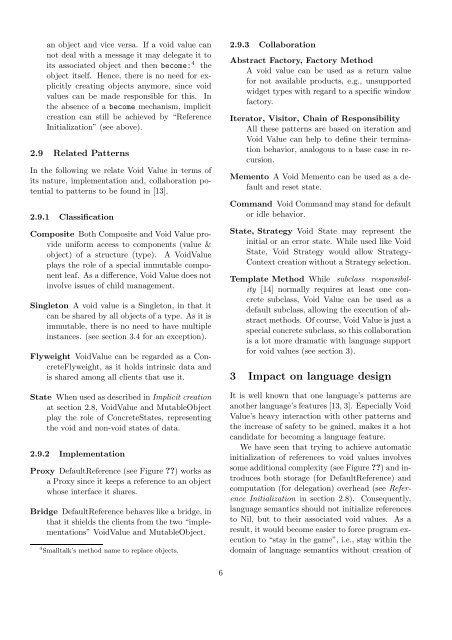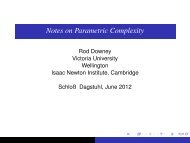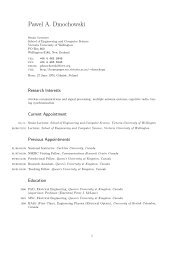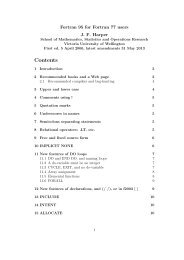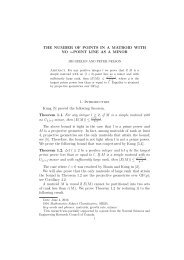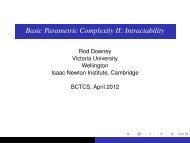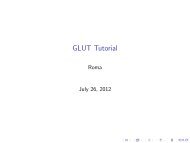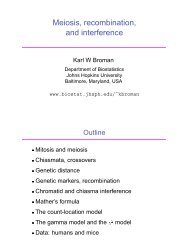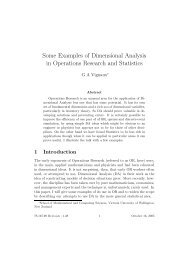Nil and None considered Null and Void - School of Engineering and ...
Nil and None considered Null and Void - School of Engineering and ...
Nil and None considered Null and Void - School of Engineering and ...
You also want an ePaper? Increase the reach of your titles
YUMPU automatically turns print PDFs into web optimized ePapers that Google loves.
an object <strong>and</strong> vice versa. If a void value can<br />
not deal with a message it may delegate it to<br />
its associated object <strong>and</strong> then become: 4 the<br />
object itself. Hence, there is no need for explicitly<br />
creating objects anymore, since void<br />
values can be made responsible for this. In<br />
the absence <strong>of</strong> a become mechanism, implicit<br />
creation can still be achieved by “Reference<br />
Initialization” (see above).<br />
2.9 Related Patterns<br />
In the following we relate <strong>Void</strong> Value in terms <strong>of</strong><br />
its nature, implementation <strong>and</strong>, collaboration potential<br />
to patterns to be found in [13].<br />
2.9.1 Classification<br />
Composite Both Composite <strong>and</strong> <strong>Void</strong> Value provide<br />
uniform access to components (value &<br />
object) <strong>of</strong> a structure (type). A <strong>Void</strong>Value<br />
plays the role <strong>of</strong> a special immutable component<br />
leaf. As a difference, <strong>Void</strong> Value does not<br />
involve issues <strong>of</strong> child management.<br />
Singleton A void value is a Singleton, in that it<br />
can be shared by all objects <strong>of</strong> a type. As it is<br />
immutable, there is no need to have multiple<br />
instances. (see section 3.4 for an exception).<br />
Flyweight <strong>Void</strong>Value can be regarded as a ConcreteFlyweight,<br />
as it holds intrinsic data <strong>and</strong><br />
is shared among all clients that use it.<br />
State When used as described in Implicit creation<br />
at section 2.8, <strong>Void</strong>Value <strong>and</strong> MutableObject<br />
play the role <strong>of</strong> ConcreteStates, representing<br />
the void <strong>and</strong> non-void states <strong>of</strong> data.<br />
2.9.2 Implementation<br />
Proxy DefaultReference (see Figure ??) works as<br />
a Proxy since it keeps a reference to an object<br />
whose interface it shares.<br />
Bridge DefaultReference behaves like a bridge, in<br />
that it shields the clients from the two “implementations”<br />
<strong>Void</strong>Value <strong>and</strong> MutableObject.<br />
4 Smalltalk’s method name to replace objects.<br />
2.9.3 Collaboration<br />
Abstract Factory, Factory Method<br />
A void value can be used as a return value<br />
for not available products, e.g., unsupported<br />
widget types with regard to a specific window<br />
factory.<br />
Iterator, Visitor, Chain <strong>of</strong> Responsibility<br />
All these patterns are based on iteration <strong>and</strong><br />
<strong>Void</strong> Value can help to define their termination<br />
behavior, analogous to a base case in recursion.<br />
Memento A <strong>Void</strong> Memento can be used as a default<br />
<strong>and</strong> reset state.<br />
Comm<strong>and</strong> <strong>Void</strong> Comm<strong>and</strong> may st<strong>and</strong> for default<br />
or idle behavior.<br />
State, Strategy <strong>Void</strong> State may represent the<br />
initial or an error state. While used like <strong>Void</strong><br />
State, <strong>Void</strong> Strategy would allow Strategy-<br />
Context creation without a Strategy selection.<br />
Template Method While subclass responsibility<br />
[14] normally requires at least one concrete<br />
subclass, <strong>Void</strong> Value can be used as a<br />
default subclass, allowing the execution <strong>of</strong> abstract<br />
methods. Of course, <strong>Void</strong> Value is just a<br />
special concrete subclass, so this collaboration<br />
is a lot more dramatic with language support<br />
for void values (see section 3).<br />
3 Impact on language design<br />
It is well known that one language’s patterns are<br />
another language’s features [13, 3]. Especially <strong>Void</strong><br />
Value’s heavy interaction with other patterns <strong>and</strong><br />
the increase <strong>of</strong> safety to be gained, makes it a hot<br />
c<strong>and</strong>idate for becoming a language feature.<br />
We have seen that trying to achieve automatic<br />
initialization <strong>of</strong> references to void values involves<br />
some additional complexity (see Figure ??) <strong>and</strong> introduces<br />
both storage (for DefaultReference) <strong>and</strong><br />
computation (for delegation) overhead (see Reference<br />
Initialization in section 2.8). Consequently,<br />
language semantics should not initialize references<br />
to <strong>Nil</strong>, but to their associated void values. As a<br />
result, it would become easier to force program execution<br />
to “stay in the game”, i.e., stay within the<br />
domain <strong>of</strong> language semantics without creation <strong>of</strong><br />
6


